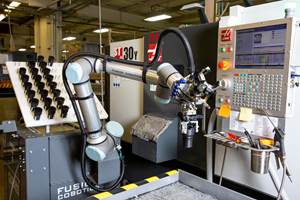The Pellets Have Returned, Too
Materials suppliers came back to NPE2018 in a big way last month.
NPE2012—the first year the triennial trade show was held in Orlando—was promoted as “The Return of the Machines” in the months leading up to the show. And that turned out to be prophetic, as machine builders brought lots more equipment to the exhibit floor than they did in the scaled-back NPE2009. The trend continued at NPE2015; and at last month’s NPE2018, there were a reported 2 million more pounds of equipment on the floor than at any previous NPE. Wow. And quite a bit of that machinery and equipment was humming and buzzing all week long. Great news for our industry indeed.
But as I made my way from the West Building, where most of the machinery companies were exhibiting, toward the South Building of the giant Orange County Convention Center, I was struck by something I consider equally impressive: large exhibits belonging to materials companies, many of whom over the years had scaled back if not altogether dropped their presence at NPE (but, notably, not at Chinaplas nor the K Show in Dusseldorf).
I mentioned my observation to Matt Naitove, executive editor of Plastics Technology magazine. You see, Matt knows a thing or two about NPEs: 2018 marked his 16th show (I’ve been to 10). He quipped, “Well, I guess the pellets have returned too.”
While not as grizzled as Matt, I’ve been around in plastics journalism since 1988. When I started, the materials companies were the primary newsmakers in the industry. Quite a few would hold annual press conferences touting new materials and applications.
Others would regularly invite the plastics media to attend their facilities for open houses and other such news-making events. For sure, there were significant developments in machinery as well, but the big breakthroughs were in materials.
Then things started to slow down.
Suppliers of engineering resins seemed less interested in communicating news of their developments to processors—our core audience—and keener on talking to designers at OEMs. The OEM designers are important for certain, but isn’t it best to keep both links in the plastics manufacturing chain well lubricated? And suppliers of polyolefins? Well, I remember a conversation I had on this matter in the mid-90s with a mid-level manager at a major polyolefin supplier, and that person opined, “Our material is the same as that company’s, and that company’s, and that other company’s too. What’s there to talk about? What’s there to market? We just want our people selling it.” Obviously, that was this exec’s way of expressing the commoditization of PE and PP.
Was that person right or wrong? Perhaps it may have been a correct assessment at the time, but the winds of change have shifted. Perhaps plant expansions driven by inexpensive feedstocks like shale gas are one reason. Maybe—as some major suppliers have predicted—processors from abroad are looking to establish a manufacturing footprint in the North American market. In any event, I see more news coming from materials companies—and not just on exotic engineering thermoplastics but on bread-and-butter polyolefins as well—than I remember seeing in a long time. And not just about resin, but about additives that when dosed teach the base material new tricks. So-called commodity polymers are indeed being engineered to accommodate a marketplace that is demanding better performance and more speed.
I think it’s in the best interest of our industry that materials suppliers communicate up and down the manufacturing chain. Processors may not always buy the material—lots of times the bigger OEMs do the negotiating to take advantage of their economies of scale—but for certain it’s always being run through their machines.
I’m hoping what I saw at NPE2018 is a sign of things to come.
Related Content
See Recyclers Close the Loop on Trade Show Production Scrap at NPE2024
A collaboration between show organizer PLASTICS, recycler CPR and size reduction experts WEIMA and Conair recovered and recycled all production scrap at NPE2024.
Read MoreAttending NPE2024 From the Perspective of a Molder
NPE2024 has come and gone, but before it’s completely in our collective rearview, Plastics Technology asked Rodney Davenport, vice president at injection molder CH3 Solutions, for a processor’s perspective on the big show.
Read MoreFour Industry 4.0 Tech Adoption Insights from Indiana Plastics Manufacturers
As more plastics manufacturers step into the Fourth Industrial Revolution, insights have emerged about how best to approach the digital transformation journey.
Read MoreImpacts of Auto’s Switch to Sustainability
Of all the trends you can see at NPE2024, this one is BIG. Not only is the auto industry transitioning to electrification but there are concerted efforts to modify the materials used, especially polymers, for interior applications.
Read MoreRead Next
For PLASTICS' CEO Seaholm, NPE to Shine Light on Sustainability Successes
With advocacy, communication and sustainability as three main pillars, Seaholm leads a trade association to NPE that ‘is more active today than we have ever been.’
Read MoreMaking the Circular Economy a Reality
Driven by brand owner demands and new worldwide legislation, the entire supply chain is working toward the shift to circularity, with some evidence the circular economy has already begun.
Read More









